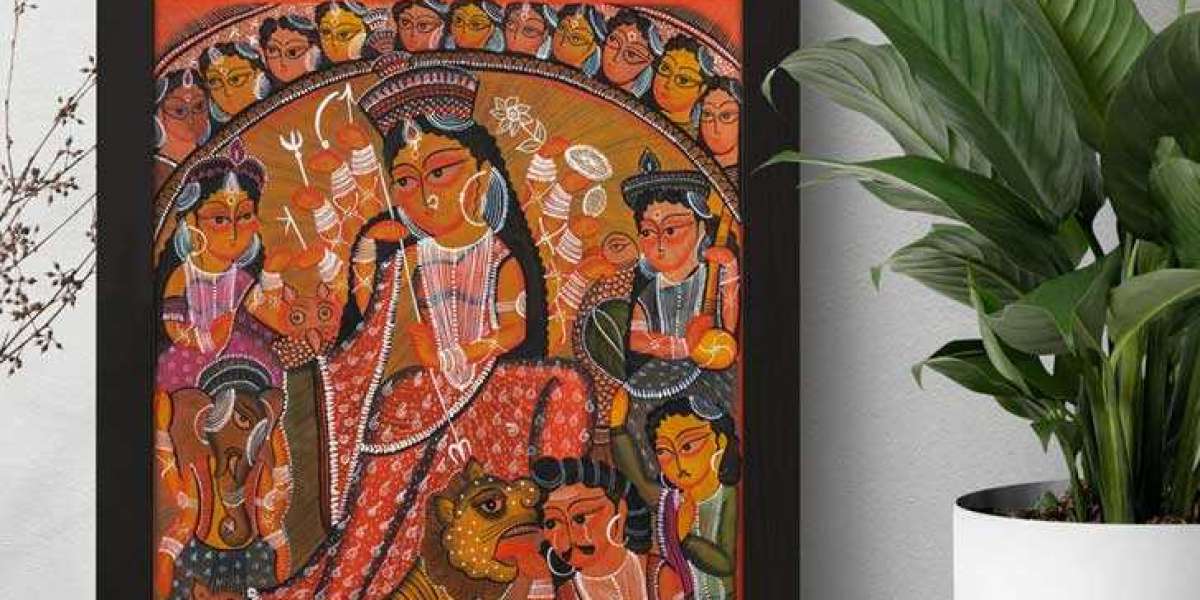The art of Bengal Patachitra holds a mirror to the rich cultural tapestry of West Bengal, India. This traditional art form, with its intricate details and profound narratives, not only decorates homes but also carries the essence of folklore and spiritual mythology that has been passed down through generations. As we delve into the world of Bengal Patachitra, we uncover the layers of history, craftsmanship, and cultural significance embedded in each painting.
The Roots of Bengal Patachitra
Bengal Patachitra, or simply Patachitra, refers to traditional, cloth-based scroll painting. Originating from the Eastern regions of India, particularly West Bengal and Odisha, this art form is characterized by its bold, linear expressions and vibrant colors. The word 'Pata' in Sanskrit means cloth, and 'Chitra' means picture; thus, Patachitra translates to picture painted on cloth.
Historically, this art was a medium of storytelling by itinerant artists and storytellers known as Patuas. These artists traveled from village to village, unfurling the scrolls and singing the tales depicted in the frames, which often included themes from Indian epics like the Mahabharata and Ramayana, local myths, and social messages.
The Artistic Process
Crafting the Canvas
The creation of a Bengal Patachitra scroll begins with the preparation of the canvas. Artists traditionally weave together strips of cloth, often old saris, which are then coated with a mixture of clay and cow dung. After drying, this base is smoothed out and given a final coat of soft white clay, creating a pristine surface for painting.
The Painting Technique
Using natural colors derived from stones, plants, and soot, the artists bring life to their narratives with a bamboo brush. Each color serves a purpose, not just in beautification but in symbolism. The dominant use of red, yellow, blue, and green is not merely a stylistic choice but one steeped in cultural significance, portraying elements like earth, sky, and vegetation in hues that capture the imagination.
Themes and Narratives
The themes of Bengal Patachitra are as diverse as the flora and fauna of the region. From mythological tales and religious lore to social issues like gender equality and environmental concerns, the scrolls serve as a canvas for both ancient and contemporary narratives. This versatility makes Bengal Patachitra a living tradition, evolving with the times while preserving its historical essence.
Mythology and Spirituality
One of the most popular themes in Bengal Patachitra is the depiction of mythological stories. These include tales of gods and goddesses such as Durga, Kali, and Krishna, which not only serve a religious purpose but also function as educational tools, teaching values and morals through the visual medium.
Social Commentary
Increasingly, contemporary Patachitras are also addressing modern issues. This transition from purely mythological themes to include social commentary reflects the dynamic nature of this art form. For instance, issues like climate change, deforestation, and even the effects of globalization on local communities find expression through these colorful scrolls.
Cultural Significance
Festivals and Rituals
Bengal Patachitra is deeply intertwined with local festivals and rituals. During occasions such as the Durga Puja and Poush Mela, these artworks are highly sought after. They not only add to the festive décor but are also used in rituals and storytelling performances, reinforcing their role in the cultural and spiritual life of the community.
Economic Impact
For many artists, Bengal Patachitra is not just a form of artistic expression but also a means of livelihood. The craft supports many families in rural Bengal, and efforts to preserve and promote this art form contribute to sustainable economic development in these areas.
Preserving Bengal Patachitra
In an age where digital media dominates, preserving such traditional art forms is crucial. Organizations and governments are collaborating to provide platforms where artists can showcase their work, both nationally and internationally. Moreover, workshops and educational programs are being conducted to teach the younger generation these traditional skills, ensuring that the art of Bengal Patachitra continues to thrive.
Conclusion
Bengal Patachitra is a vivid embodiment of India's rich artistic heritage. As it adapts to the changing times, it continues to enchant and educate, offering insights into the life, beliefs, and struggles of its people. Through its vibrant colors and compelling narratives, Bengal Patachitra remains a poignant reminder of the power of art to bridge the past and present, making it an invaluable cultural treasure.
In exploring the vibrant world of Bengal Patachitra, we are not just witnessing an art form but engaging with a living history that continues to resonate with people across the globe. It is a testament to the enduring spirit of human creativity and cultural expression.



